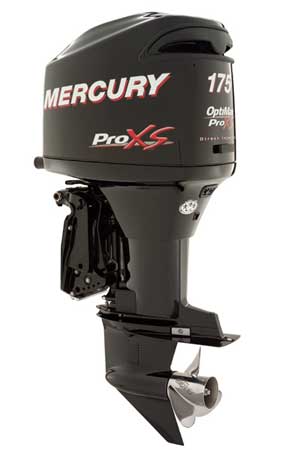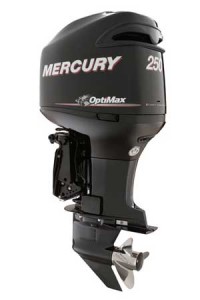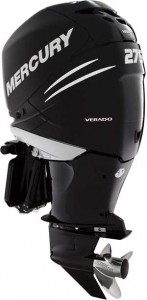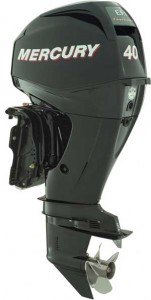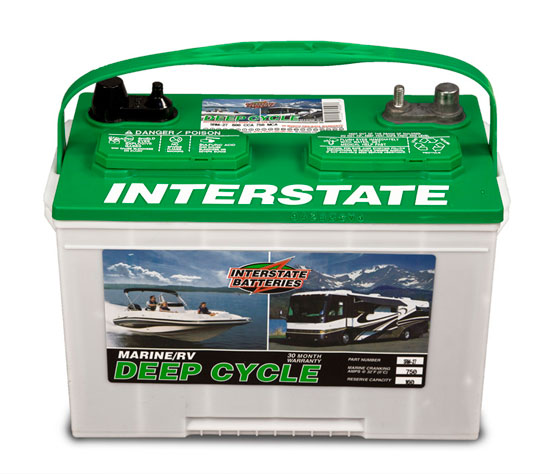The Outboard Expert: Mercury Marine Marches On
Mercury makes mid-year product push.
July 9, 2007
I had the nerve to go on vacation a few weeks ago, and missed a Mercury Marine media event held in Sarasota, Fla. Now that Mercury (www.mercurymarine.com) is not observing model years, it trickles product out whenever it is ready, even if I've already made plans to be in Colorado. I'll get some live-action time with these motors in the coming weeks — a benefit of living two blocks from the Mercury test facility in Oshkosh, Wis. — but until then here's what we know.
New OptiMax Muscle
Mercury has not forsaken two-stroke fans. Two new OptiMax models expand its line of direct-injected two-stroke V6 models. The first fills in a hole in the high-performance Pro XS line. While offered with either a 20-inch or 25-inch shaft, the new 175 Pro XS is intended mostly for the bass boat market. Mercury has applied its Pro XS formula used on the 3.0-liter Pro XS 225/250-hp models to the lighter 2.5-liter powerhead to create the 175 Pro XS. Updates include a switch to more durable and responsive carbon fiber intake reed valves and a higher injection pressure for improved low-end and mid-range power.
The durable Mercury Racing Torque Master gearcase has a heavy-duty propshaft and dual water pickups on the front end of the torpedo for a reliable flow of cooling water at extreme trim angles, plus an asymmetrical skeg that counters prop torque. The 1.87:1 gear ratio is the same as that of the standard Optimax 175, but the WOT rpm range is boosted from 5250-5750 to 5500-6000 rpm, which helps expand propping options. Finally, the 20-inch 175 Pro XS gets solid aluminum motor mounts, which better control engine twist on the transom at high speeds for improved handling. Unlike the 225/250 Pro XS, the new 175 Pro XS has a Three Star emissions rating.
The motor will be available later this month with a suggested retail price starting at $14,080 for the 20-inch model, compared to $13,580 for the standard 175 Optimax. The new OptiMax 175 Pro XS goes head-to-head with the 2.6-liter Yamaha Vmax 175 HPDI (MSRP $15,120). At 431 pounds, the Merc weighs less than the 468-pound Yamaha (www.yamaha-motor.com), and its 60-amp alternator is more powerful than the 45-amp Yamaha charger. The Yamaha is only offered with a 20-inch shaft, and has a Two Star emissions rating.
Coming later this year is a new 3.0-liter OptiMax 250, the most-powerful standard OptiMax model Merc has offered to date. Unlike the OptiMax Pro XS 250, which is tuned more for top-end power and lighter, high-performance boats, the OptiMax 250 is intended for offshore applications. A key change is the use of a more-durable Verado gearcase with 1.75:1 gears (the same ratio as the 225-hp OptiMax). This motor will also have the carbon fiber reeds used on the Pro XS models. Mercury says the OptiMax 250 will be more fuel efficient than the OptiMax Pro XS. No pricing is available at this time.
Verado Updates
Back in February, I reported on expected updates to the four-cylinder and six-cylinder Mercury Verado supercharged four-stroke line as part of a story on the new 200-hp and 300-hp Verado models. Now Merc has made that news official and provided a few more technical details. The key goal was to increase fuel efficiency, which has been disappointing since the Verado was launched in 2004. Merc engineers have told me that the Verado was set up to run on the rich side in an effort to ensure reliability, which would be critical when the new motor was launched, especially in light of all the reliability trouble the OptiMax had when it debuted.
Now Merc is feeling it better knows the capability of the Verado platform, and has leaned out the fuel delivery. According to Mercury, the updated 150-hp Verado consumes 22 percent less fuel at wide-open throttle and 18 percent less fuel on average at cruise speed than the 150 hp Verado introduced in 2005. That's a nice boost with gas still over $3.00 a gallon in many parts of the country. Other powertrain updates include a switch from cast to lighter and more durable forged pistons. The oiling system was improved with new precision-machined oil dams and eccentric grooved crankshaft main bearings. New intake cam profiles enhance top-end power, and a new PCM (power control module) calibration makes it all work. You'll be able to spot one of these new Verados dressed in flashy a chrome-polished graphics package.
Updated Mid-Range FourStrokes
Finally, Mercury has updated its 995cc 60/50-hp and 747cc 40-hp FourStroke EFI models with improved shifting, rigging and styling. The improved shifting mechanism was first introduced on the large-gearcase Bigfoot models for pontoons, and now that low-effort shift has been applied to the standard motors in this range. In addition, all of the 40, 50 and 60 hp FourStroke models (including the Bigfoots) will feature new styling and engine cowl graphics that match the rest of the Mercury FourStroke product line and make these motors look like mini-Verados. A new latching system and improved cowl seal comes with the new hood. The new motors will be available in late summer.
Honda Earns Consumer Satisfaction Honor
Honda Marine has received the NMMA CSI Recognition Award for Excellence in Customer Satisfaction for the 2007 program year. Presented by the National Marine Manufacturers Association (NMMA), this marks the fourth consecutive year that Honda Marine has secured the honor. The Customer Satisfaction Index (CSI) Award recognizes companies that actively measure customer satisfaction to pursue continuous improvement. Recipients have achieved and maintained an independently measured standard of 90 percent or higher in customer satisfaction during the past year, based on customer surveys. Honda Marine's outboard engines were recognized for their performance, fuel-efficiency, reliability and quiet operation.
NMMA launched its CSI program in 2001 to provide boat and engine manufacturers with an independently-measured, cost-effective tool to help improve customer satisfaction in the boating industry. Since the program's inception, more than 450,000 surveys have been sent out to new boat and engine customers, allowing participating manufacturers to monitor customer satisfaction on an ongoing basis, and to benchmark themselves against the industry and their competitors. The program currently has 103 boat and engine brands participating.
Editor's Note: Charles Plueddeman is the editor at large for Boating, the nation's largest boating magazine.
